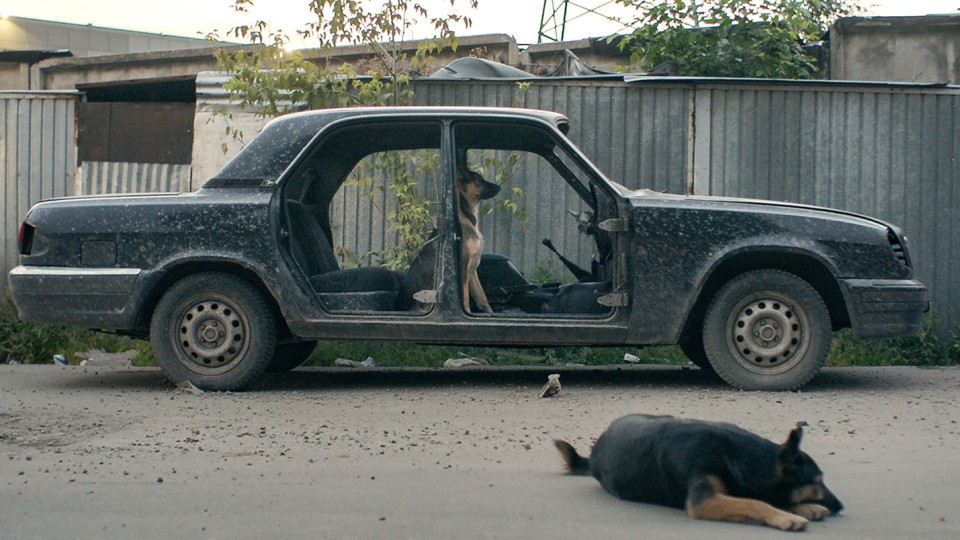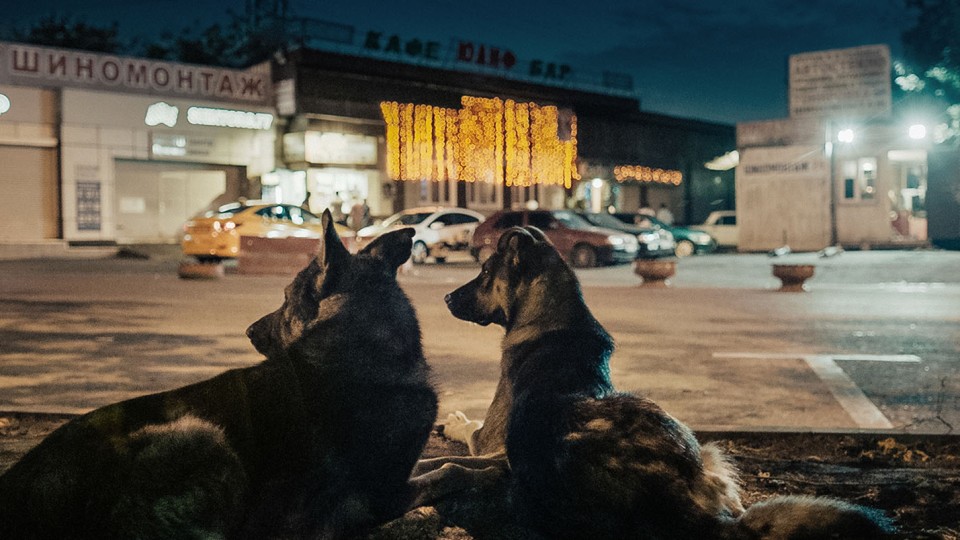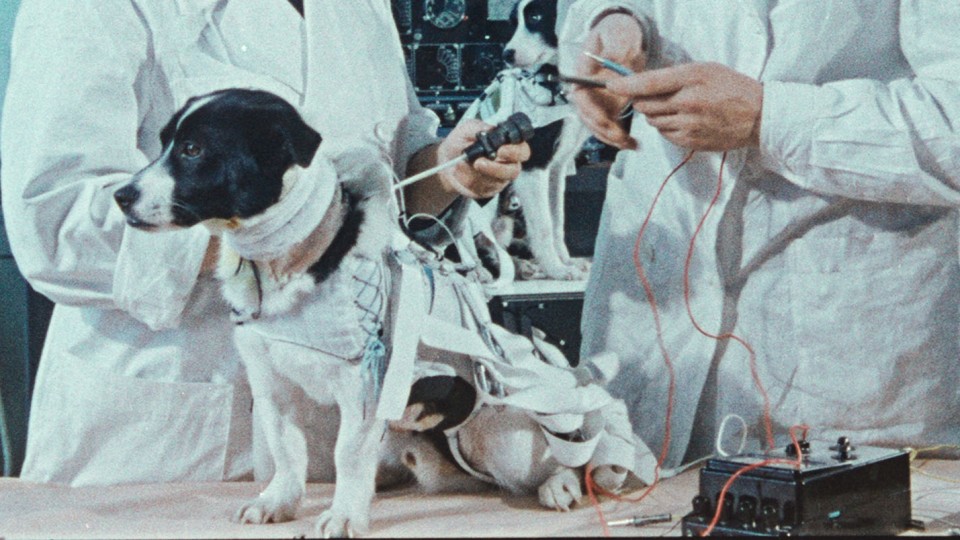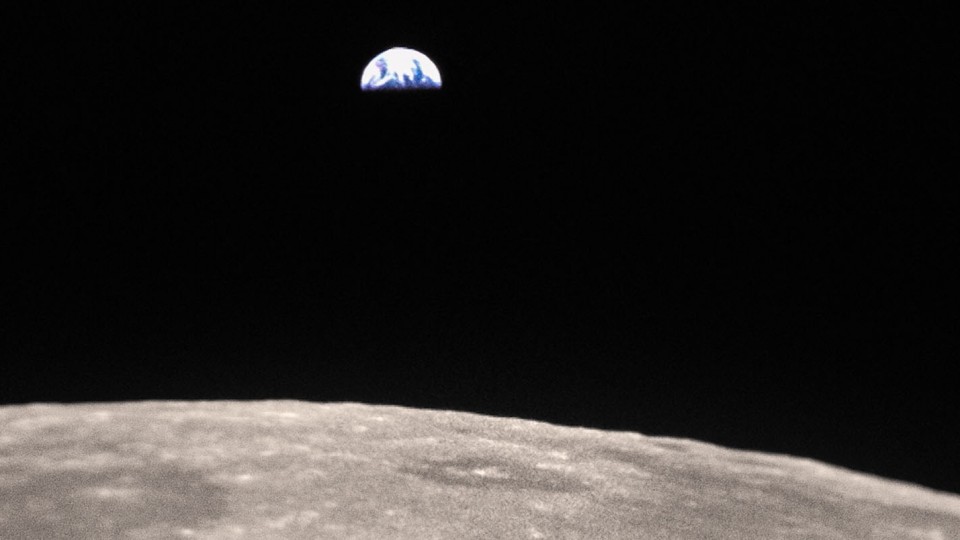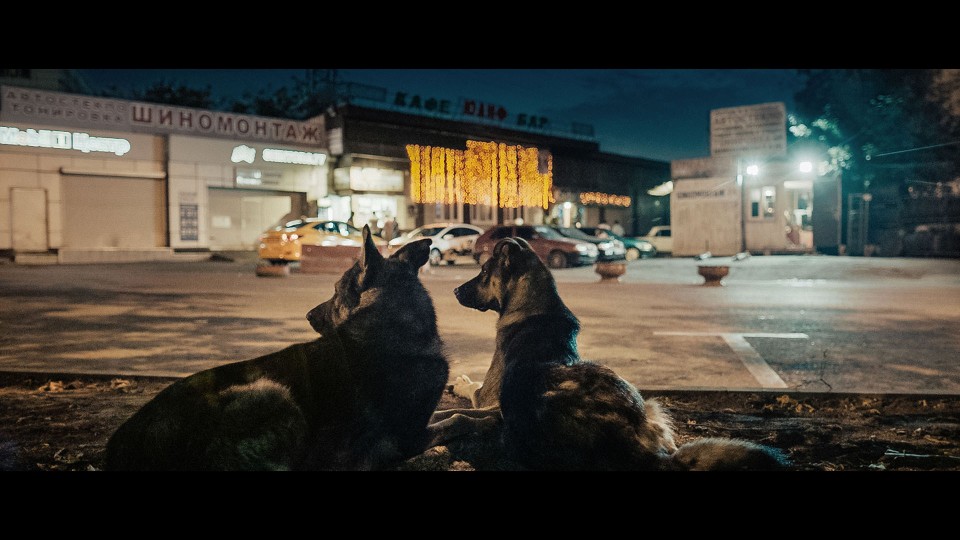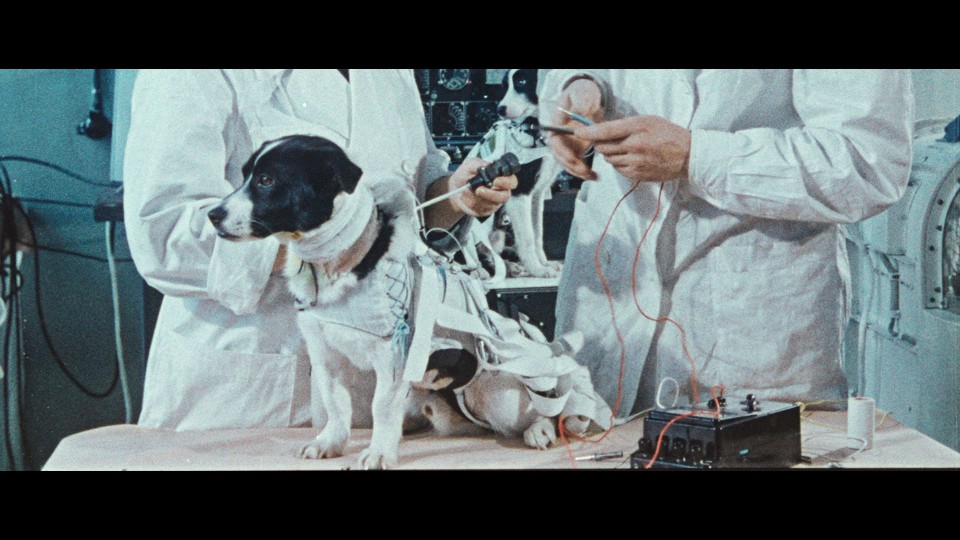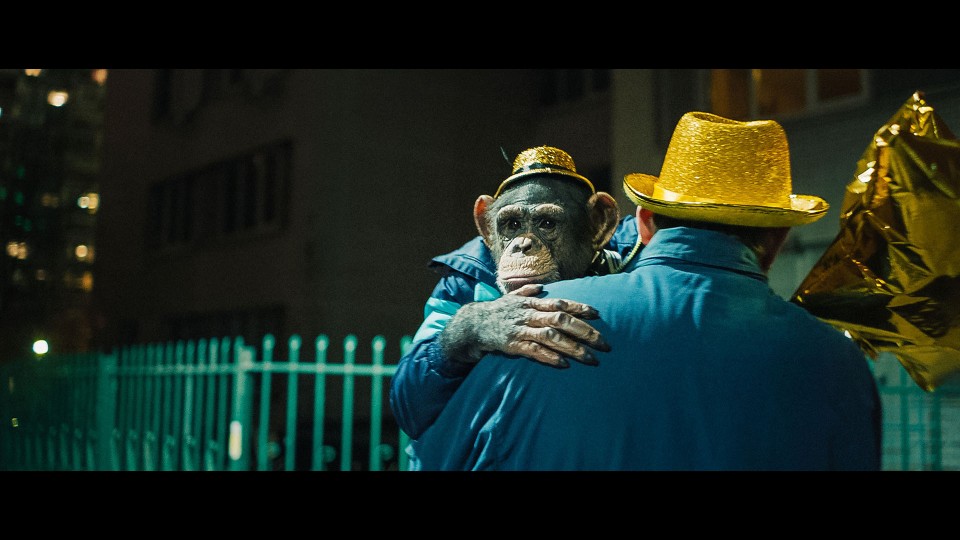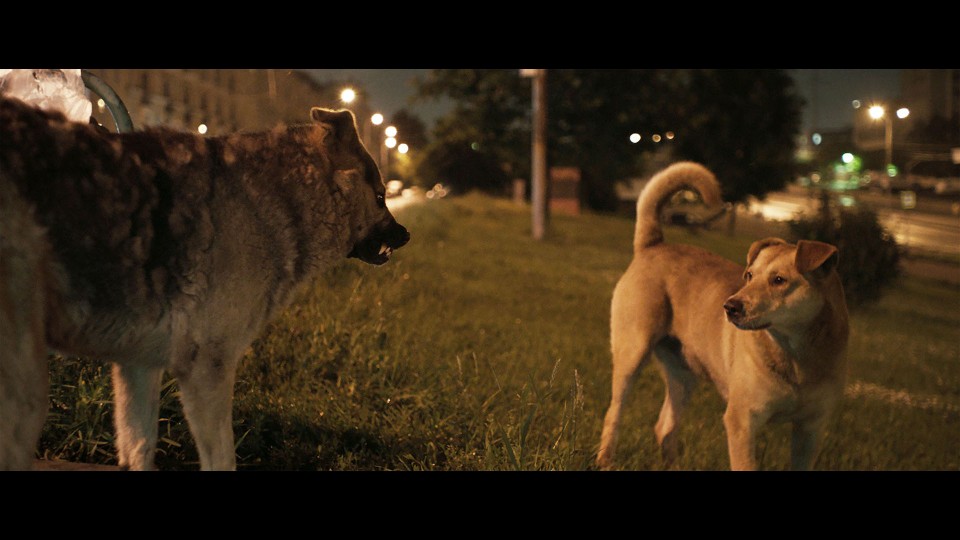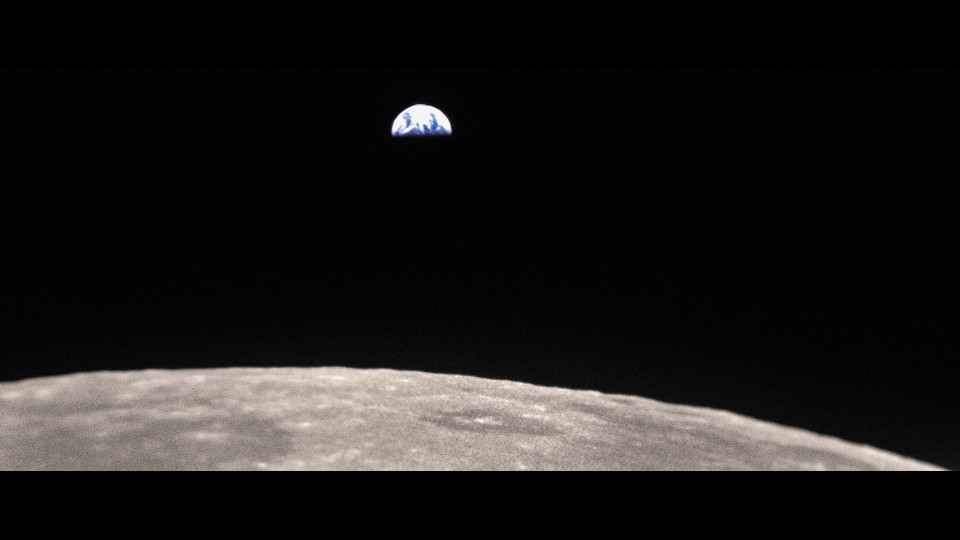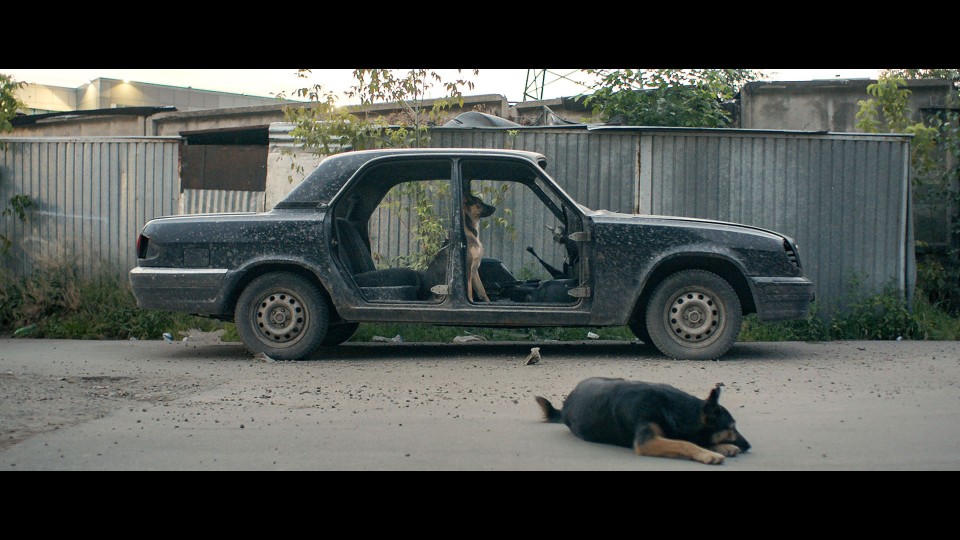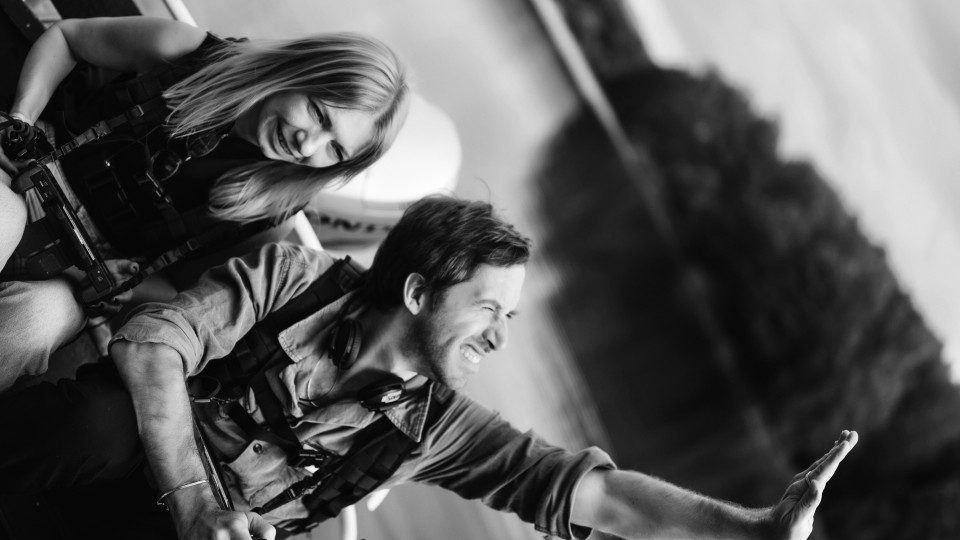Laika, the world's most famous dog astronaut, was a child of the Moscow streets. She did not survive her mission in the space capsule, but perhaps her spirit returned to our world: perhaps her descendants still roam the streets of the Russian capital to this day. Filmmakers Elsa Kremser and Levin Peter joined up with a pack of stray dogs in order to see Moscow at night through their eyes. In Space Dogs they interweave the wild lives of the street curs with impressive archive footage from the space race in the 1960s, creating a voyage through the realms of research, fable and freedom.
SPACE DOGS came into being under the auspices of Start Stipendium (an Austrian grant scheme for young artists). What was the initial idea for this unusual narrative? When did Laika become involved?
ELSA KREMSER: The first idea was to focus on dogs in a pack. There was no mention at all of Laika, the first dog in outer space. We wanted to develop a striking mode of interaction with living beings – something that hasn't existed in the cinema in this form before – and tell a story with them.
LEVIN PETER: A dog’s heart. A dog’s soul. If you spend a lot of time with street dogs and observe them closely, you can't avoid thinking about their souls. The connection with Laika was the idea that millions of years after the Earth came into being, the first living creature to orbit our planet in a metal ball is a Moscow street dog that has to create a new kind of life, between the wilderness and mankind. We regarded that as a fine parable, and it served as a starting point.
ELSA KREMSER: The question we asked ourselves was: how do street dogs perceive a big city from their height? What kind of world must it be – a world that we don't really see? And at the same time we were looking for an abstraction, a metaphor where that could be reflected. It was during this phase that we discovered Laika had been a street dog. She had been living on the streets for two years. Maybe her descendants are running around somewhere to this day? Levin posed a different question: what happened to that living being, the first creature to be sent outside inhabitable space, at the moment when her body burnt up and she was reduced to nothingness? What exactly died at that point? Scientists explained to us that in fact those particles would slowly sink back down to earth. It can take between 60 and 100 years. And then we came up with the crucial concept of Laika's spirit inhabiting the streets of Moscow.
The OFF text in Russian sounds very poetic. Did you start with a literary/textual foundation and then address the task of developing images for it?
LEVIN PETER: The text is based on the research. We managed to get hold of records from scientific publications and also diary notes from the scientists who worked with the dogs. This additional layer was introduced into the format at a relatively late stage, and it ended up coloring everything due to the Soviet way of formulating science. In some cases the scientific publications read like fairy tales. It was amazing how close our ideas were to their narratives.
How did you "cast" your dogs?
ELSA KREMSER: We spent about two months in Moscow looking for a pack. In a way it really was like casting, because we wanted dogs who would be genuine protagonists, able to interact with us and display their characters while still being wild. We searched from the middle of the city, around Red Square, to the furthest corners of the outer ring road, and we found a wide variety of street dogs. We experienced a lot and heard a lot of stories, some of them probably excessive, although that didn’t harm our screenplay at all. It was able to grow from there.
How did you get closer to your animal protagonists?
LEVIN PETER: Wherever the city is collapsing and new spaces are emerging, you find dogs as well. We would try to scan places like that. When we came to a new place and discovered some dogs there, the routine was always similar: at first just one dog approached us, and then you could see the others behind it. During that first encounter with the "scout" it was already apparent whether we should stay for longer or turn around and leave.
ELSA KREMSER: We quickly established one rule: we didn't feed the dogs. In general, street dogs are only familiar with two forms of human interaction: people either feed them or kick them. A lot of the packs are absolutely bewildered if you just stand there, watch and wait. But that also engenders interest on their part, leading to a different form of contact. With our pack it took a very long time. But without that foundation, which grew slowly, we would never have achieved what we did by the end of the shoot: a situation where we could follow them without them always waiting for some reward.
How did you succeed in constantly filming the dogs at eye level?
LEVIN PETER: Just five years ago technical limitations alone would have prevented us from making this film. At that time there simply weren’t any cameras that could capture the beauty we wanted to show in such poor lighting while being light enough for the cameraman to hold in a low position during a shoot lasting months. After a long search we found a stabilization system which permitted our cameraman Roy Imer to have the camera suspended from his hips and operate at eye level with the dogs. At first we were always afraid we would miss things. We felt we were being too slow, we were never there at the right time. At some stage we came to understand their routes. We stopped wasting energy in the middle of the day: it was obvious that more interesting things happened at night, and the people who were around at night were more fascinating. We tried to sleep during the day so we could work at night. It all culminated in the last weeks, which were really interesting: the technology was no longer an obstacle, and we could do exactly what we had dreamed of the whole time, in terms of a film experience. And clearly the dogs were also prepared to go along with that.
There is one very vivid, brutal scene. A dramaturgical gift and a red line at the same time. How did you cope with this situation?
ELSA KREMSER: It just happened. It was on one of the first days we felt we'd found a rhythm, and the dogs were also aware of us. Of course it stunned us. We had decided to follow the dogs without being judgmental, so we followed them in this case as well. Without any compromise. Whether something was spectacular or not wasn't a criterion for us. At that moment the dogs snatched control away from us, and we were just still functioning. It became apparent to us that they have their own world, which exists without human control.
LEVIN PETER: It was a complete loss of control, as though they were demonstrating to us who they were and showing us something we had never thought about. The scene is a turning point, and not only in the film itself: during the shoot it had a very profound effect on us as well. Suddenly we were faced with new issues. We became aware that we were working on something people had never seen in the cinema. A frontier had been crossed. Those dogs didn't owe us anything: they didn't exist in order to satisfy our projections. They showed us that in drastic fashion, as a whole team.
The film features incredibly impressive archive material. How much work was it to find that and gain the rights to it?
LEVIN PETER: It was a huge amount of work. If you just go to Google or YouTube and key in "Laika", you can find really exciting material. And that made us wonder what else must exist in the archives. We discover that there were still rolls of film in the Moscow Institute for Biomedical Problems which had never been made public, but they were kept under lock and key. Obtaining the material was incredibly difficult, with lots of highs and lows. We established a good relationship with the people there, and again and again it looked as though we‘d be granted access, but our prospects would depend on the tension between Russia and the EU at any given moment. They were worried the images would be used in a report with a European, western, anti-Russian tone, and the content would be distorted.
ELSA KREMSER: It was a learning process for us: we had to respect the fact that things don't always work out the way we imagine. And it's not necessarily because of propaganda. For some people politics doesn't matter at all: their attitude is that they have to protect a treasure, to guard it. We sat in the canteen with them ten times, and then one day they said: "Actually, we have something you might find interesting…"
After the long preparatory and shooting periods, and in view of the material itself, the task of editing it must have taken on great significance. What was your approach there?
ELSA KREMSER: Editing wasn't at all easy, since we had a huge amount of material. It was important that the audience would be able to differentiate between the dogs and to understand their relationships. The biggest challenge was filtering out the material that would show what they were experiencing together. And then we wanted to interweave this narrative with the archive material, the story of Laika, and with the other dogs in the pack who weren’t so distinctive. Our aim was to combine the purely documentary with the fairy-tale, scripted element and maintain a balance.
On the spectrum between fiction and documentary reality, where would you locate your film?
LEVIN PETER: The element that is the most profound for us – allowing these dogs to lead us through the city and get to know them – is the purest classical documentary work we have ever done, in my view. Nothing there is invented, and it all functions without language.
ELSA KREMSER: I understand people who see the film and want to know whether what we are showing is genuine. But I’d be happier if it weren’t necessary to make that distinction. In the end it's simply a film. A dreamy form with a cosmic narrative based on facts, linked to the story of genuine street dogs.
Interview: Karin Schiefer
July 2019
Translation: Charles Osborne

